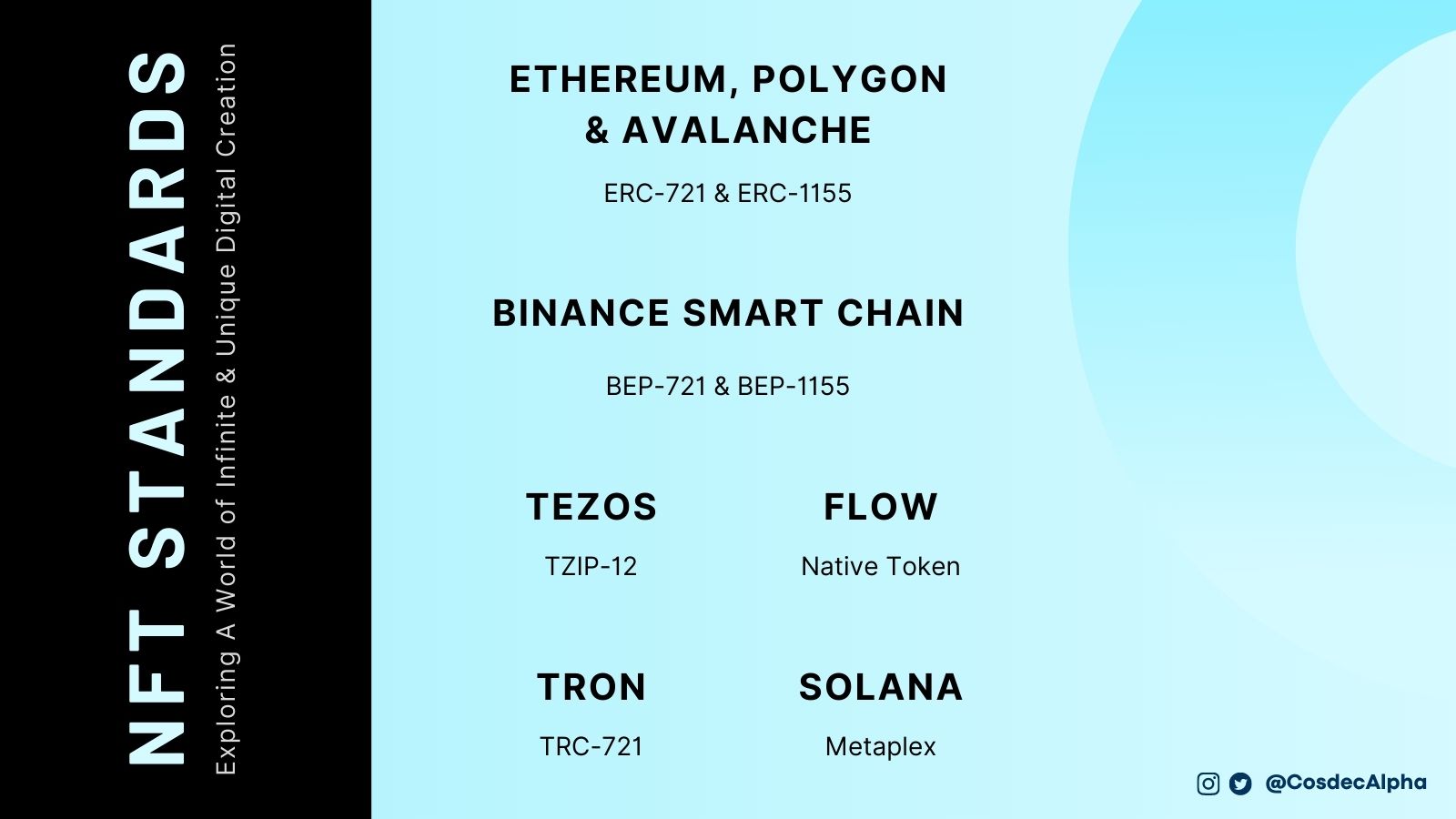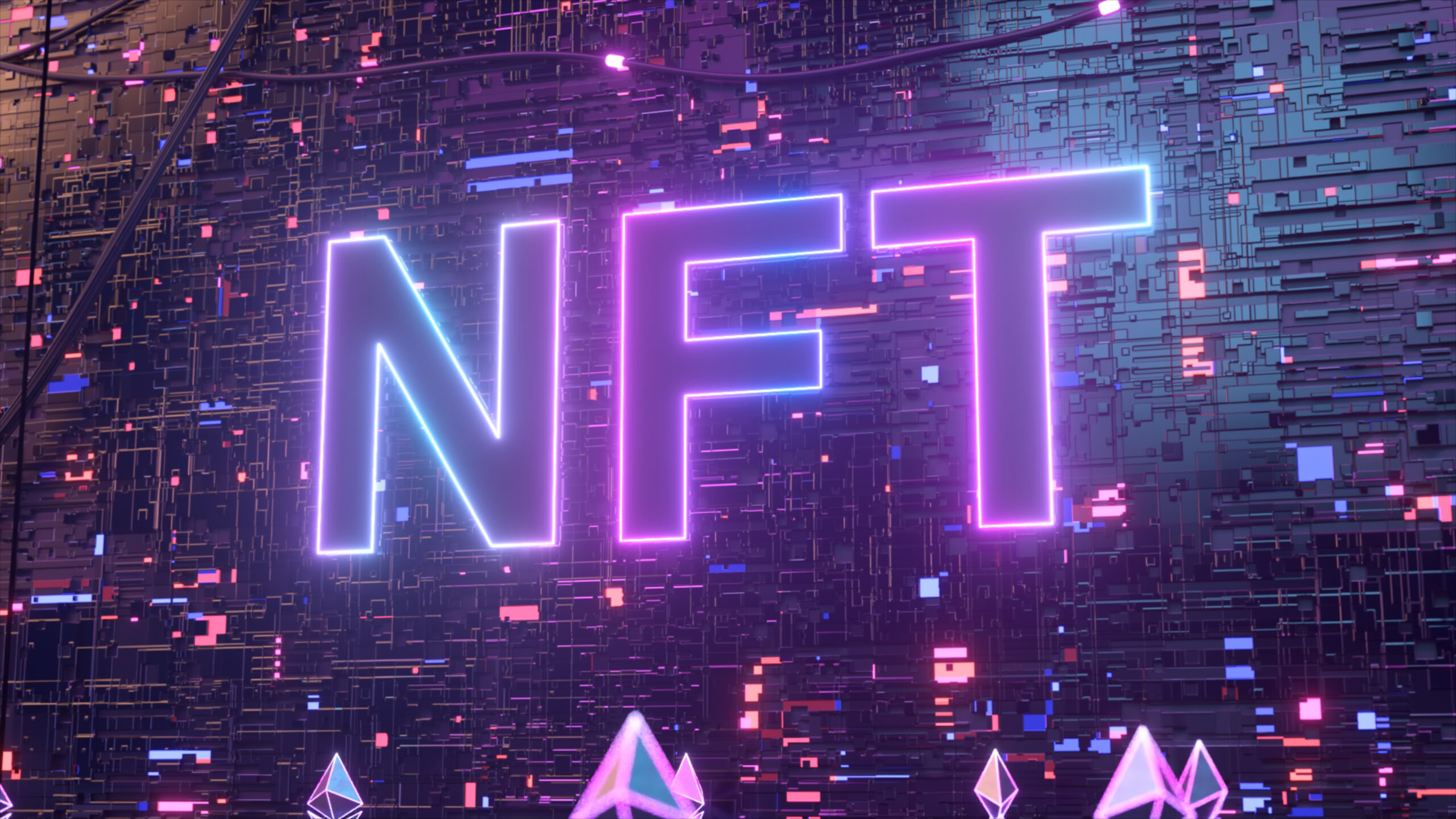Non-fungible tokens (NFTs) are digital tokens with unique IDs that authorize them to relate themselves to particular on-chain addresses. They also have all-inclusive metadata that is put together as an ideal instrument for authenticating the ownership of assets. NFTs are usually applied to physical and virtual assets to realize their value. These NFTs are generally used in the metaverse, video games, real estate, and collectibles. In this guide, we will give you a brief explanation of the different token standards and their respective smart contracts on Ethereum and other blockchains.
What is a token standard?
A token standard is defined as the smart contract and characteristics that the token issued by it has. There are plenty of different standards on different blockchains. The simplest and most convenient categorization would be between fungible and non-fungible tokens.
Over time, Ethereum has procured more and more popularity and now most NFTs are issued on this blockchain. Ethereum token standards begin with the abbreviation ‘ERC’ (Ethereum Request for Comments). Before we dive into the NFT Standards, let’s look at what a world of ERC standards looks like.
The ERC standards
ERC-20 tokens function as a regular cryptocurrency, but they are still tokens. ERC-20 works specifically on the Ethereum blockchain; therefore, commissions are written off during transactions, and gas fees directly depend on the network’s load. ERC-20 can be used as a financial asset, utility asset, or currency.
ERC-721 – Non-Fungible Tokens (NFT)
ERC-223 – Much like ERC-20 but with a feature that makes sure, the tokens are only sent to compatible addresses. This eliminates the loss of access to the tokens since they cannot be recovered from incompatible addresses.
ERC-827 – This allows the approval of fungible token transfers so the tokens can be spent by an on-chain third party.
ERC-777 – An improvement on ERC-20. Users can send tokens on behalf of different addresses.
ERC-1155 – A smart contract that allows users to manage Ethereum tokens of many types. It can contain ERC-20 or ERC-721 tokens and it works for all types of assets: fungible and non-fungible.
ERC-1137 – A token standard designed for recurring payments. It works well for subscriptions requiring payments at certain intervals.
ERC-998 – A smart contract that allows users to merge several NFTs into one NFT.
ERC-875 – A smart contract that allows users to transfer several NFTs in a single transaction.
Exploring NFT Standards

Ethereum & L2 Chains
The most famous non-fungible token standards on the Ethereum network are ERC-721 and ERC-1155. ERC-1155 is more commonly operated for collections of several different NFTs. The ERC-721 standard is used for single NFTs.
ERC-721 creates non-fungible tokens for single assets. The token has considerably a large amount of meta-information and can record transaction history. The foremost aim of ERC-721 is to register copyright ownership. Another important function of this token standard is its potential to enable royalty payments associated with each resale of the NFT since it can record transaction history.
Avalanche C-Chain and Polygon also acts like Ethereum and is a correspondent with Ethereum’s smart contracts. Users can create NFTs of the ERC-721 standard on Avalanche & Polygon.
ERC-1155 is a universal token standard for the Ethereum blockchain because it is nonconflicting with both fungible and non-fungible assets. With it, you can create and control tokens of different standards in a single transaction. The only downside of ERC-1155 tokens is that they cannot record transaction history as the assets used in an ERC-1155 smart contract have transaction histories that are independent of ERC-1155.
The capability to transfer numerous assets in a single transaction is one of ERC-1155’s big advantages over many other standards, helping to significantly lessen network congestion and lower gas prices substantially. A transfer rate of 155 assets per second was achieved using ERC-1155 tokens.
Binance Smart Chain
Binance Smart Chain has a built-in Ethereum Virtual Machine, which makes it interoperable with Ethereum. BEP-721 is like ERC-721 but on Binance Smart Chain. BEP-721 offers all the benefits that come with BSC:
- Low fees compared to Ethereum (around 20 cents per trade)
- Faster transactions
Therefore, if you want to trade NFTs and pay less for gas, BEP-721 is a great solution. BEP-1155 is like ERC-1155 but on Binance Smart Chain. BEP-1155 offers:
- The capability to issue several unique tokens at once in one smart contract
- Tokens could be both fungible and non-fungible
- Support for atomic swaps
- Support for ’batch’ transactions
- There is no need to wait for the block to be formed to complete the transaction.
This standard is the most appropriate and suitable for blockchain games since it was created for them. However, it has shown its usefulness in other industries as well also, namely the art industry.
Tezos
TZIP-12 – contributes to various token types and allows users to oversee fungible and non-fungible tokens. This token standard is used on the Tezos blockchain. Its main characteristic is the ability to implant a hash from IPFS into a Tezos-based token.
Despite several advantages, the token standard is not seemingly very popular and has rather a couple of unique assets based on it. However, if you decide to buy a TZIP-12-based NFT, you would pay a very small fee, which makes this blockchain quite user-friendly.
Flow
Flow is a special blockchain designed specifically for collectibles and games. The very popular NBA Top Shot uses this blockchain.
Flow has its NFT standard which is the equivalent of ERC-721. Transactions on Flow are much inexpensive and faster than on Ethereum. This blockchain is perfect for artists and NFT creators as it was specifically designed to work favourably with non-fungible tokens.
Tron
TRC-721 – non-fungible tokens. This NFT asset standard is equivalent to ERC-721 on the Tron blockchain. Like ERC-721, all TRC-721 tokens have unique IDs, the leading dissimilarity being the very low costs of using TRC-721 compared to ERC-721. Transactions within the Tron network rarely ever reach one dollar, so it is very cost-effective.
To establish assets based on TRC-721, you must have at least 350 TRX in your balance. The name and ticker of the NFT can be customized upon its issuance.
Still Confused?
Creating & Issuing may seem simple on the surface but can have various widespread implications especially if you do not get your NFT Standards right. Cosdec Alpha works in Asset Creation & Management for all kinds of Digital Assets including NFTs. We’d love to chat with you about the complex yet exciting world of digital assets. After all, we love addressing confusion and solving problems!




